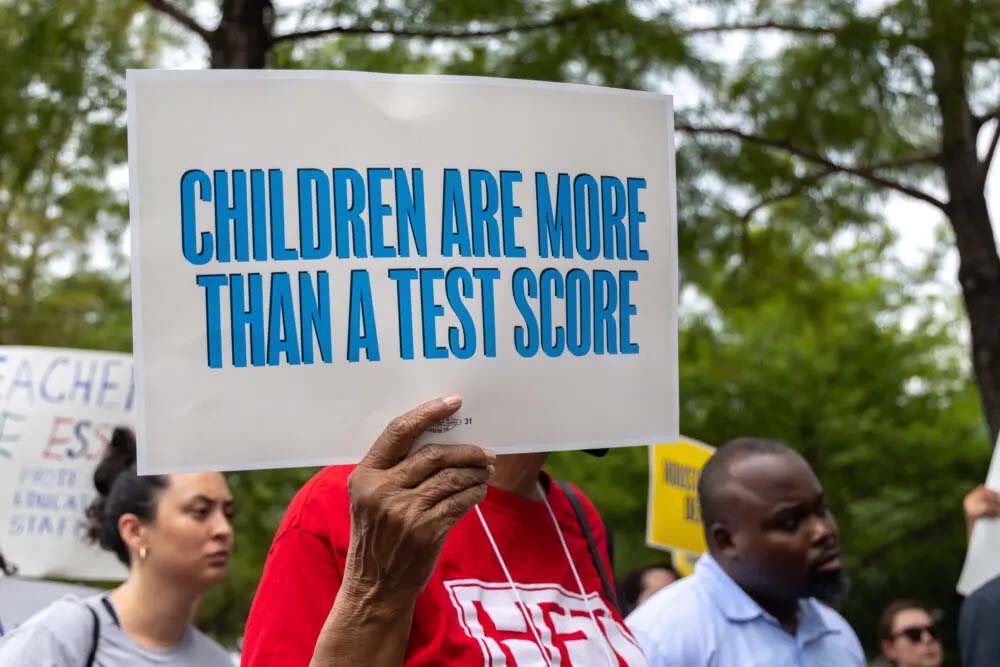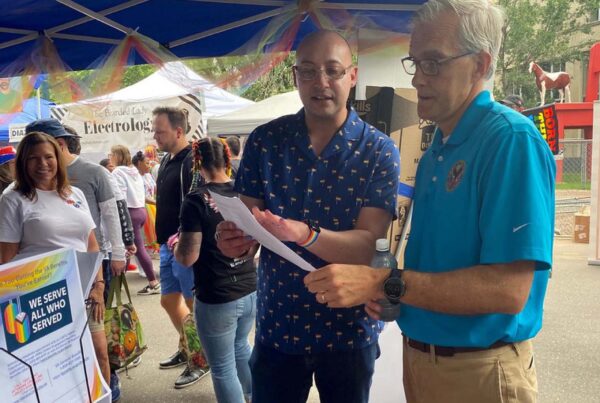Today, Texas Standard debuts The Drill Down, a monthly feature highlighting investigative and enterprise journalism from The Texas Newsroom and our public radio partners across the state.
“What you’re going to be able to expect is in-depth reporting – this might be fact checking, analysis, investigative work,” said Lauren McGaughy, an investigative reporter and editor with The Texas Newsroom. “We’re going to be as transparent as possible with our listeners.”
 First up: It’s been over half a year since the Texas Education Agency took over the Houston Independent School District, appointing a new superintendent and management board, in an effort to turn around schools that have struggled to meet state academic standards.
First up: It’s been over half a year since the Texas Education Agency took over the Houston Independent School District, appointing a new superintendent and management board, in an effort to turn around schools that have struggled to meet state academic standards.
Nearly a third of the schools in the state’s largest district just wrapped up the first semester under a sweeping reform program, and superintendent Mike Miles announced last week that more schools will see changes in August.
Houston Public Media reporter Dominic Anthony Walsh has been following it all, and he joined the Standard with his latest findings.
This transcript has been edited lightly for clarity:
Texas Standard: You spoke with superintendent Mike Miles last week about the expansion of these reforms. Remind us what the past few months have been like for Houston ISD, and what’s next?
Dominic Anthony Walsh: In June, when Miles arrived, he launched what’s called the New Education System. It’s a turnaround model for struggling campuses, featuring longer school days, centrally created curriculum, higher pay for educators, and a zero-tolerance approach to student misbehavior. It currently includes 85 schools and is set to soon expand to more than 110.
So this reform program is expanding. I understand you recently obtained some information through a set of public records requests that shed light on how these changes are affecting students, teachers and families. Let’s begin with students.
Students have really mixed feelings about the changes. When I spend time at these schools, I hear a lot of complaints about the increased workload, the fast instructional pacing and the strict discipline. And when students really open up, they talk about unmet social and emotional needs.
Kashmere High School faced reforms this year, and we obtained records showing a near doubling in staff turnover during the summer, when teachers had to reapply for their jobs. Junior DiCapryon Euell-Holloway, who missed lots of school over the past few years to take care of a family member, said:
“All the teachers that tried to help me and my situation, who understood me, they’re gone. And I feel like now I’m empty because the the people that actually made me come to this school are gone now.”
I’ve also heard optimism from some students who do feel like they’re learning more, but this idea that teachers aren’t trying to build relationships with students or just don’t have time to under the new model is a common one.
And I understand you recently asked superintendent Mike Miles about this.
Yeah, and I framed the question around one document I obtained earlier in the year. So like we mentioned, teachers at 28 schools had to reapply for their jobs over the summer. We obtained the interview rubric questions for applicants, as well as the correct answers that administrators were looking for.
One question asked teachers to explain how schools should deal with student behavior problems, and almost all of the answers focused on high expectations or high performance, while only one of these preferred answers mentioned building relationships. Here’s what Miles had to say:
“Enforcing common sense discipline, while you’re having teachers build relationships – maybe that is the way to go, which it seems like it is. We have not said ‘don’t build relationships.’ Teachers do that. And of course, I mean, coaches do that. Counselors do that. Principals do that. So, all we said was, there’s three big rules. You can’t violate them. You can’t disrespect teachers. So that’s not saying don’t build relationships with kids. And it’s working. So I think we’re going to stick with what’s working.”
You also asked him about teacher turnover.
Yeah. So we recently got information – again, through a public records request – showing a near doubling in teacher resignations from August through early January of this year compared to the same time period in each of the previous two school years. So the previous two school years, it was less than 250 resignations. It’s up to more than 600 so far this year. Here’s what superintendent Miles had to say about that:
“You’re talking about two teachers per school. So let’s keep that in perspective, number one. And lots of districts have resignations during the school year. And lately in the profession, it’s happened more than usual, not just HISD. So the fact that there’s more than last year doesn’t bother me.”
» GET MORE NEWS FROM AROUND THE STATE: Sign up for Texas Standard’s weekly newsletters
What do we know about why the teachers are leaving and what effect that’s having on schools?
This is something I want to dig into more. We do not know just yet how many years of experience those 600+ teachers had, or what exactly drove each of them to resign. I was able to talk with one teacher who resigned this month, Melissa Yarborough, who taught English language arts, and she had already been thinking about looking for a different district. Here’s what she had to say:
“The takeover was really the main reason, though, because eventually teacher pay is going to be connected to test scores, and so you can’t predict what your salary is going to be year to year.”
She’s talking there about the district’s plan to shift all teachers to what’s called a pay for performance model by the 2025-26 school year. That’s when salaries will be largely based on student test scores, as well as classroom spot observations, pretty similar to a program Miles implemented in Dallas about a decade ago. We actually first obtained and published that plan in July.
But Yarborough also felt less autonomy this year, with administrators pushing her to adhere to the district’s centrally created lessons. And she didn’t want to do that. So she left.
Finally, you’ve been looking at cuts to the district’s homeless department and other policy changes. What did you find, and how is it affecting families?
I started looking into this when I heard from parents without permanent housing about some big problems this year. Under federal law, homeless students have protections, like the right to transportation to school.
I spoke with one mom who became homeless two years ago and is now in transitional housing. She waited three weeks for her son to get transportation and said she was not able to get in touch with the homeless services department for most of that time. Now, according to our records, HISD’s Homeless Services office went from 40 positions this time last year to 12 now.
And that’s not the only change. Another program that’s intended to help these families is what’s known as Wraparound Services. The wraparound specialists previously focused on food access and other programs that meet students’ basic needs on a campus-by-campus basis. Those workers will now focus on truancy and dropouts, according to a document we obtained.
When asked about the change to Wraparound Services, Superintendent Mike Miles said:
“Maybe it should be both. Maybe it should be food access. I mean, we’re not just providing food access. We’re spending a lot of resources on kids and there should be some connection. We’re not here just for food access, as important as that is. That’s not the only thing we should look at.”
Dominic, what will you continue to follow as the district keeps moving through this makeover process?
One thing we haven’t mentioned just yet: special education. We had a story in October about a shortfall in speech therapy. By the end of November, there were still 17 campuses without a speech therapist.
We’ll continue digging into whether services are improving in this district that has long struggled when it comes to special ed.













